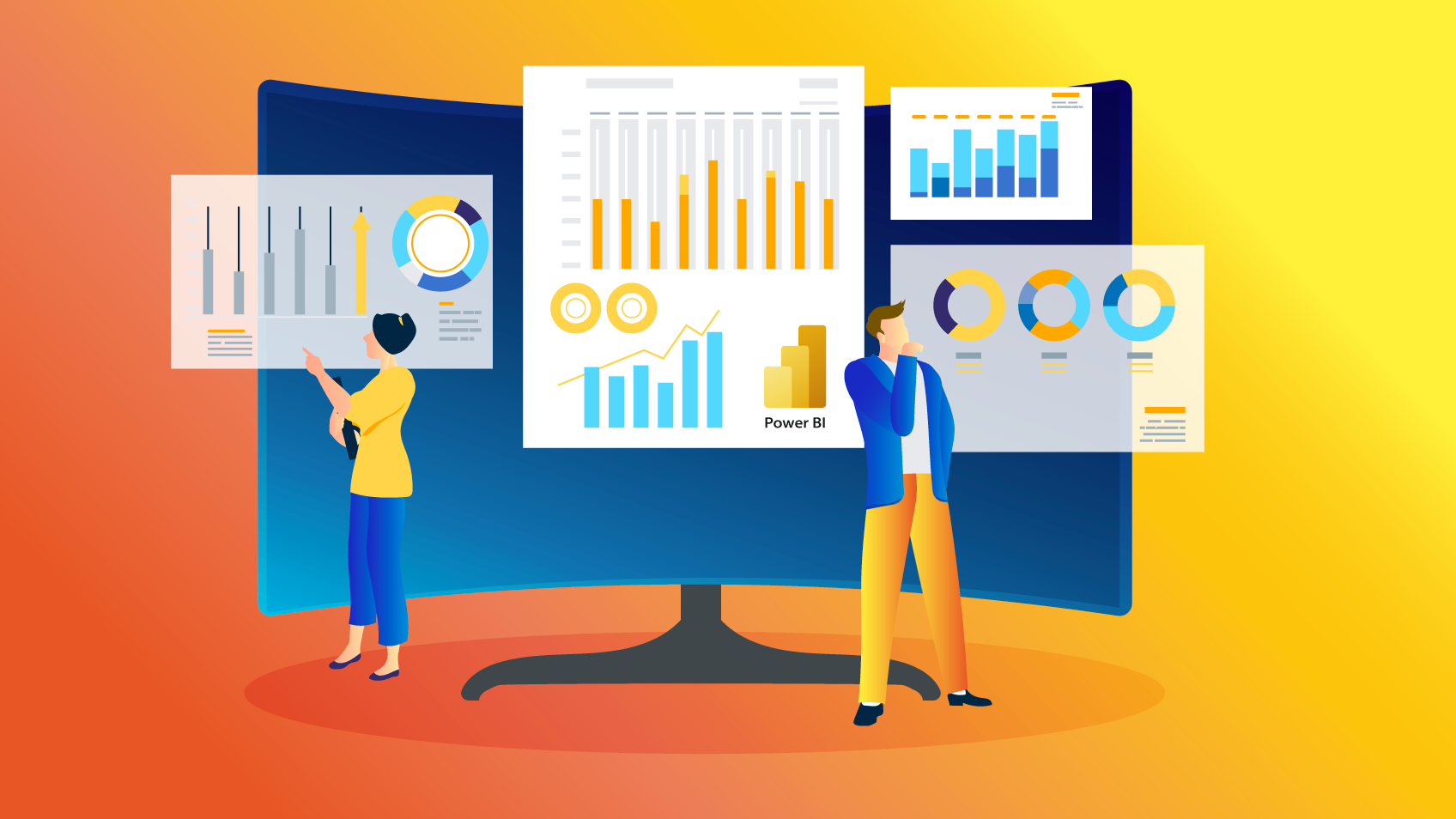In the current business world data is an essential asset that can either make or break an organization. Power BI and Microsoft Fabric are powerful tools that companies use to harness the potential of data. These platforms are the backbone of business intelligence, and when they are combined with Azure Data Factory, they become an unstoppable force in data analytics and decision-making.
Power BI Power BI Your Business Intelligence Companion
Power BI, a product from Microsoft, is a powerful business intelligence software designed to help businesses visualize and share the insights they gain from their data. Power BI allows users to build interactive reports and dashboards, transforming raw data into actionable data.

Whether you’re a small startup or a large company, Power BI adapts to your needs. It seamlessly integrates with different sources of data that make it simpler to combine data from different platforms and databases. Its simple drag and drop interface lets even non-technical people to produce useful reports.
Power BI’s platform provides real-time data processing. This guarantees that you are always working with the most current data. Power BI comes with a variety of visualizations to help you present data in a fun and digestible way. Collaboration and sharing reports with colleagues can improve decision-making and creates a data-driven business culture within your organization.
Microsoft Fabric Weaving Data Innovation
Microsoft Fabric is a framework that orchestrates and connects data from Microsoft services. It is the fabric which transforms your data into an easily accessible and reusable entity. This allows businesses to get insights fast.
Microsoft Fabric is the foundation of data integrity and consistency when businesses have to deal with increasing volumes of data. Microsoft Fabric is integrated with a wide range of services ranging from Azure Data Lake Storage, Azure SQL Data Warehouse, and Power BI. This integration ensures that data is flowing smoothly and that information can be derived from a variety of sources.
The versatility of Microsoft Fabric is particularly evident in its data transformation capabilities. Use it to clean up and prepare data for analysis. It can also be used to it to ensure that data complies to your organization’s guidelines on data governance. Microsoft Fabric is the platform that will ensure your data is safe precise, reliable, and ready for analytics.
Azure Data Factory: The Gateway to Data Transformation
Azure Data Factory is another vital component of the modern business intelligence ecosystem. It is a cloud-based solution that allows you to manage and plan data-driven processes. By orchestrating data movement and transformation of data, Azure Data Factory paves the way for valuable insights.
One of the key strengths of Azure Data Factory is its flexibility in connecting to different data sources. Your data can be incorporated seamlessly, whether it is on-premises, in the cloud or both. This gives you an overview of your entire data environment, regardless of where your data is located. The platform can handle batch processing, real time streams of data and big data analytics. This makes it suitable for various scenarios.
Azure Data Factory offers a visual interface that makes it easier to manage the creation of data pipelines. It’s easy to design the schedule, monitor, and plan the workflow of data, even if you’re not an expert in coding. It lets business users monitor their data integration process and allow them to build data themselves.
Power BI with Microsoft Fabric, Azure Data Factory, and Power BI
If Power BI and Azure Data Factory when combined together, they create a powerful trio that will enhance your data analysis capabilities. Here’s how they synergize:
1. Data Integration Azure Data Factory connects to a myriad of data sources, making sure that your data is readily accessible. This integration tool is integrated into Microsoft Fabric, which orchestrates the data from various services. It makes sure that your data is properly structured, cleaned and is ready for analysis using Power BI.
2. Microsoft Fabric’s Data Transformation is essential to meet your analysis needs. If it’s data-wrangling, cleansing or transforming it, the fabric makes sure that the data is structured for meaningful analysis.
3. Data Visualization: Once your data has been cleaned and sorted, Power BI takes over. Power BI enables you to produce visually appealing reports and dashboards that make complex data easily understandable. These insights are shared with the team to inspire data-driven decisions.
4. Scalability: Azure Data Factory scales effortlessly to handle increasing volume of data, and the combination of Power BI and Microsoft Fabric makes sure that your data remains stable and reliable as your business expands.
5. Power BI and Azure Data Factory provide real-time data, which can be crucial for making agile decisions.
Conclusion
The business intelligence market is growing rapidly and to remain competitive, businesses must tap into the power of data efficiently. Power BI, Microsoft Fabric and Azure Data Factory are a powerful trio that can aid you in taking your business intelligence to new heights. This trio will enable you to create stunning visuals, maintain the consistency of your data, or simplify your workflows for data. Explore the full potential of data by utilizing business intelligence.